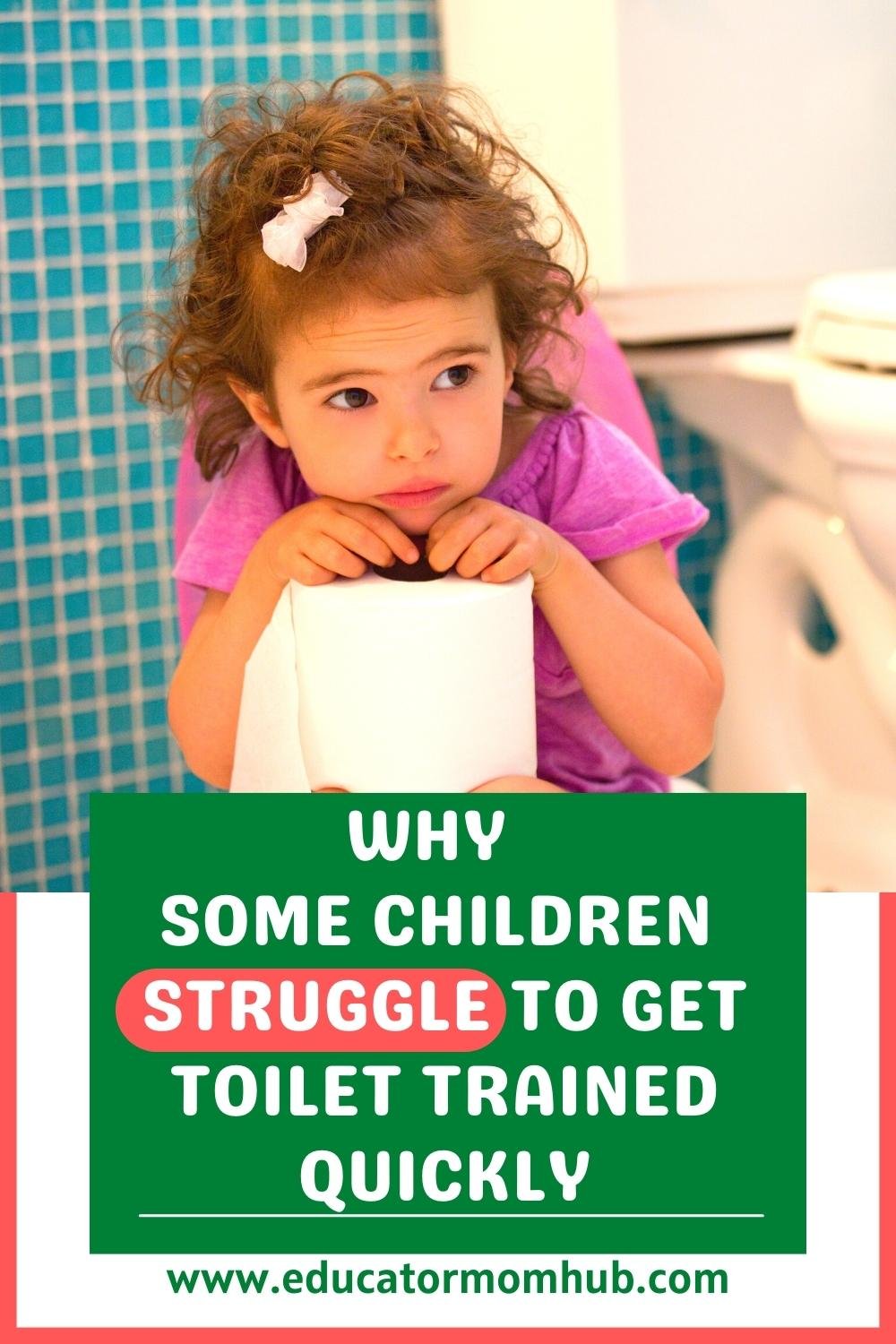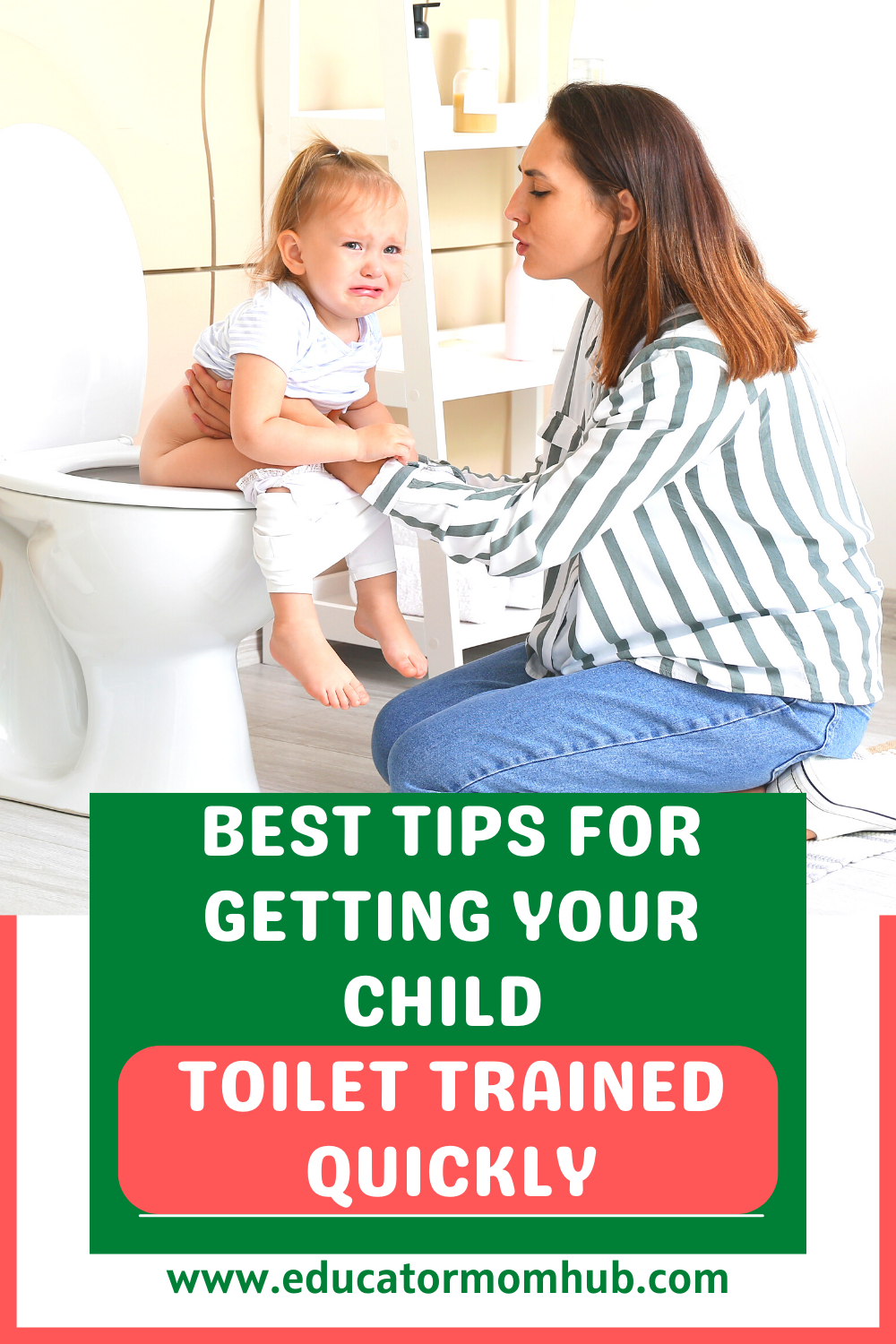10 Quick Toilet Training Tips for Preschool Moms
Disclaimer: This page contains affiliate links. If you choose to make a purchase after clicking a link, I may receive a small commission at no additional cost to you. Thank You for your support.Are you struggling to toilet-train your preschooler?
Are you finding that it is taking longer than you expected?
If so, don't worry!
We have 10 tips to help toilet-train your preschooler in a week or less!
Follow these simple tips and your little one will be using the potty like a pro in no time!
Why Is Toilet Training Important for Preschoolers?
Before we get into the toilet training tips, it is important to understand why toilet training is so important for preschoolers.
Toilet training is an important milestone for preschoolers.
It helps them feel more independent and to feel more confident in social situations.
Being able to use the toilet independently also helps children to feel more grown up.
And most importantly, it helps preschoolers prepare for school.
When children can use the toilet independently, they are less likely to have accidents at school and they are more likely to feel confident and comfortable in school settings.
Here is an article on Essential Self-Help Skills for A Good Start at School
Why Some Children Struggle to Get Toilet Trained Quickly
While toilet training is an important milestone for children, it can be a difficult and frustrating process for both parents and kids.
There are a number of reasons why some children struggle to get toilet trained quickly.
One reason is that they may not be physically ready.
For example, their muscles may not be developed enough for bladder control or bowel movements.
Another reason is that they may not have a strong enough urge to go to the toilet.
This can be caused by a number of factors, including a lack of understanding of what toilet training is or fear of using the toilet.
They may simply be resistant to change, and toilet training is just another example of that.
Whatever the reason, it's important to be patient with children who are toilet training and to understand that it may take them a little longer to get the hang of things.
10 Toilet Training Tips to Get You Started Quickly
1. Start with a Small Step
Toilet training can be overwhelming for both you and your child.
To make it less daunting, start with a small step.
For example, begin by having your child sit on the toilet seat with their clothes on.
This will help them get used to the idea of using the toilet without feeling scared or overwhelmed.
2.Explain the Process of Using the Toilet Before You Even Start Training
One of the best ways to make toilet training less daunting for your child is to explain the process before you even start training.
Take some time to sit down with your child and explain what toilet training is and how it works.
Be sure to mention that is okay to have accidents sometimes.
Explain to your child that it is more important that they try to use the toilet.
Show them the big picture.
Tell them all the things that your child will be able to do once they are toilet trained. For example, go on playdates, and road trips.
Get them excited and looking forward to using the toilet.
Simple instructions will help them understand what they need to do and why it's important.
For example, show them what toilet paper is and how to use it after urinating or pooping.
If you can, show them pictures or videos of other children using the toilet.
This will help to make the process more relatable for them.
3.Read and Watch Videos About Toilet Training Together
Reading books and watching videos about toilet training together, can help your child better understand the concept and make the process less daunting.
Seeing other children in videos going through the toilet training process can also help normalize the experience.
Mentioning casually that you need to go to the toilet, or their older sibling is in the bathroom, can also help your child understand that everyone needs to use the toilet and it's nothing to be embarrassed or worry about.
Watching videos and reading books about toilet training together can provide an opportunity for you to talk about any questions or concerns your child may have.
By taking the time to read and watch videos about toilet training together, you can help ease your child's anxiety and make the process go more smoothly.
4. Use a Potty-Training Seat
A potty-training seat helps your child feel more stable on the toilet.
A potty-training seat is also the right size for a preschooler, so they don't have to worry about falling in.
Potty training seats have a backrest, which can help your child feel more comfortable.
Many potty-training seats also come with fun designs or their favorite characters that your child will love.
By using a potty-training seat, you can help make toilet training a bit easier for both you and your child.
5.Begin with Toilet Training When They are Calm
Beginning toilet training when your child is calm can help to make the process go more smoothly.
When children are feeling calm and relaxed, they are more likely to be receptive to new ideas and willing to try new things.
This means that they are more likely to be open to the idea of using the toilet, and less likely to have accidents.
Starting toilet training when your child is calm can help to avoid any potential power struggles or meltdowns.
So, if you're thinking about toilet training your child, it's best to wait until they're in a good mood!
6.Get Them to Wear Underwear Instead of Using Pull-ups/ Training Pants
When it's time to start using the toilet regularly, it's best to ditch the pull-ups and opt for the 'big kid' underwear instead.
This may seem counterintuitive but using underwear will help your child learn to use the toilet better.
Wearing underwear will make your child more aware of when they need to use the toilet, and they will be more likely to make it to the toilet in time.
Underwear is less absorbent than training pants, so your child will feel uncomfortable and wetter when they have an accident.
When this happens a child learns that accidents are not something that should happen regularly.
Ditching the training pants in favor of underwear will help your child learn to use the toilet better and have fewer accidents.
7.Help Them Understand Their Body's Signals for Using the Toilet
One of the most important things you can do to help your child with toilet training is to help them understand their body signals for using the toilet.
For example, when they begin to cross their legs or grab their bottom, that's a sign that they need to go to the toilet.
Helping them to understand these signals will make it easier for them to know when they need to go and hopefully avoid accidents.
8.Encourage Them to Use the Toilet Regularly
Once you've started toilet training, it's important to encourage your child to use the toilet regularly.
Make sure that they know where the toilet is and that they can easily access it.
You can make this fun for your child by setting a quirky sound or music as a timer to remind your child that it is time to use the bathroom.
Encourage your child to use the toilet before and after meals, as well as before and after any activities that may make them need to go.
The more you encourage your child to use the toilet, the quicker they will get into the habit of using it regularly.
9.Make It a Positive Experience
Toilet training can be a stressful experience for both you and your child.
It's important to make it a positive experience as much as possible.
This means praising your child when they use the toilet and avoiding any negative feedback or punishment if they have an accident.
In addition, making sure that the toilet area is clean and inviting can help make it a more positive experience for your child.
You may want to consider placing a stool in front of the toilet so your child can reach it.
Using rewards, like a sticker chart, praise, hugs, and Hi 5, to make their every attempt at using the toilet a big deal will help make toilet training a positive experience for your child.
Here is a helpful article-How to Praise Your Child The Right Way- 65 Examples
10.Be Patient
Toilet training takes time and patience.
Most preschoolers are old enough to start toilet training and master the toilet training process quickly.
However, there may still be accidents and there will be days when it feels like you're not making any progress.
It's important to remain patient throughout the process.
If you get frustrated, it will only make the process harder for both you and your child.
Remember that your child is learning a new skill and it will take time for them to master it.
Get Help If You Need It
If you feel that your child is not understanding the toileting concept at all or is having genuine problems with toilet training, seek professional help.
There may be some underlying issues that need to be addressed.
In most cases, toilet training is a normal part of childhood development and will happen in due time.
However, if you're struggling, don't hesitate to get help from a professional.
A child psychologist or pediatrician can provide you with guidance and support.
Conclusion
Toilet training can be a challenging experience for both you and your child
However, by following these eleven tips, you can make the process go more smoothly and help your child master toilet training in a week or less.
Just remember to be patient, use positive reinforcement, and get help if you need it.
With a little time and effort, your child will be a toilet-training pro in no time!
FAQ
Q: At what age should I start toilet training my child?
A: The recommended age to start toilet training is around 18 months to two years old.
Q: What are some common issues that can make toilet training more difficult?
A: Common issues that can make toilet training more difficult include a lack of interest from the child, resistance to using the toilet, and difficulty understanding the toileting concept.
Q: What should I do if I'm struggling with toilet training my child?
A: If you're struggling with toilet training your child, seek professional help. A child psychologist or pediatrician can provide you with guidance and support.











